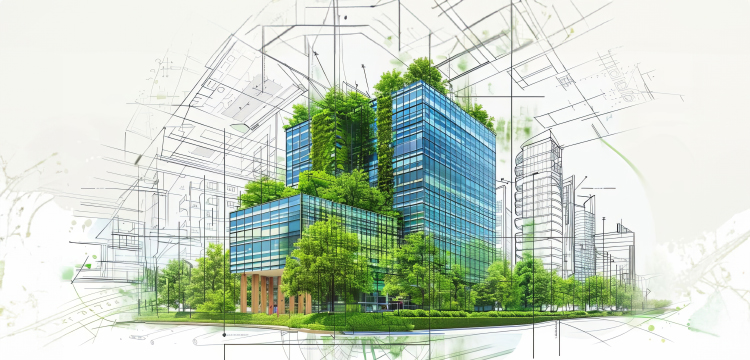Building for the Future: How Climate Change is Shaping the Construction Industry
Climate change, a pressing global issue, profoundly affects various aspects of our lives, including the integrity and sustainability of our buildings. The impact of climate change on buildings is significant, demanding urgent attention and adaptation. This blog explores the effects of climate change on buildings and constructions and presents integrated solutions, exploring how the industry is adapting to ensure resilience and sustainability.
The Impact of Climate Change on Buildings and Constructions
1. Increased Temperature and Heat Waves
Rising temperatures and more frequent heat waves place a strain on buildings, particularly those constructed with materials not designed for extreme heat. To combat this, buildings must incorporate thermal efficiency into their design. Buildings can be designed with enhanced insulation and energy-efficient features, such as reflective roofing and advanced insulation materials. These innovations help maintain optimal indoor temperatures, reducing the energy consumption needed for cooling and thereby decreasing the building’s carbon footprint.
2. Rising Sea Levels and Flooding
Sea-level rise and increased flooding pose severe risks to buildings in coastal and low-lying areas. Saltwater intrusion can corrode building materials, while flooding can cause extensive damage to foundations and electrical systems. To address this, secondary steel manufacturers have developed corrosion-resistant coatings for steel components. These coatings protect structures in flood-prone areas, extending the lifespan of steel elements and reducing maintenance costs. Additionally, constructing buildings with elevated foundations and robust drainage systems can mitigate flood damage.
3. Extreme Weather Events
The frequency and intensity of extreme weather events such as hurricanes, tornadoes, and heavy storms are on the rise. These events can cause immediate and catastrophic damage to buildings. Steel manufacturers offer a robust solution for constructing resilient buildings. Steel frames provide superior resistance to wind, earthquakes, and other natural forces compared to traditional materials. Moreover, modular and prefabricated steel buildings can be quickly assembled and disassembled, making them ideal for areas prone to natural disasters, ensuring that structures can be rapidly rebuilt if damaged.
4. Changing Precipitation Patterns
Shifts in precipitation patterns can lead to increased moisture levels, impacting building integrity. Prolonged wet periods can cause mold growth and wood rot, while droughts can lead to soil subsidence, affecting building foundations. Incorporating climate mitigation and adaptation into the design process is essential. Using recycled steel significantly reduces the carbon footprint of construction projects. These sustainable practices, such as sourcing recycled materials and utilizing energy-efficient production methods contribute to the resilience and sustainability of the built environment. Improved building separation, quality of foundations, and the use of non-combustible materials can further enhance the resilience of buildings to changing precipitation patterns.
Future-Proofing Construction Projects
For larger and more complex projects, where a construction timeline might stretch for a decade or more, it is crucial to incorporate climate change projections into the construction and commissioning phases, and the asset’s anticipated lifespan once complete. This forward-thinking approach ensures that buildings are not only resilient today but are also prepared for future climatic conditions. The construction industry is developing data pools, analytical techniques, and tools to support these forward-looking design considerations, ensuring that buildings can withstand the evolving climate.
Conclusion
Climate change impact on building and construction poses significant challenges to the construction industry, but with innovative solutions we can build resilient, sustainable, and safe structures. By leveraging the strength, durability, and sustainability of the raw materials used in construction, we can mitigate the adverse effects of climate change on our built environment.
As a secondary steel manufacturer, we are committed to pioneering these advancements, ensuring a safer and more sustainable future for all.

